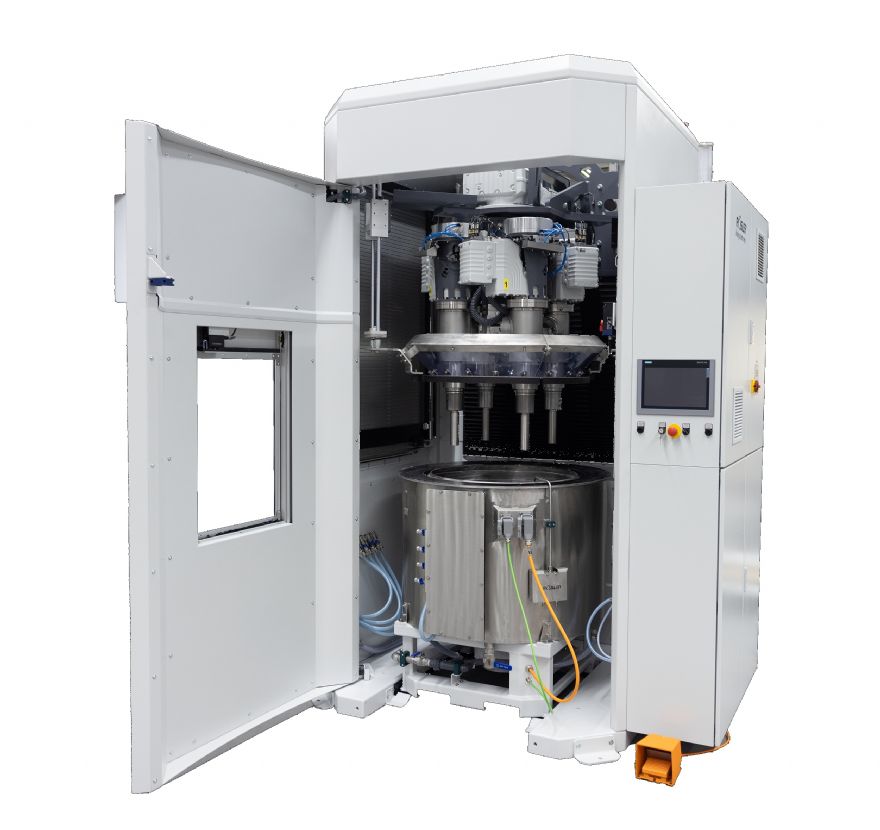
A leading manufacturer of implants made from cobalt chrome alloys has expanded its product range to include artificial knees made from titanium, and for the final surface finishing operation the company is using an RMSF 4/800 multi-surf finisher from the German company
Rösler — a global business with a UK subsidiary in Merseyside.
Compared to the drag finishing technology usually used for such finishing tasks, the resulting cycle times from the multi-surf finisher are four-times shorter; and depending on the initial surface roughness of the raw components, the ‘grinding operation’ with the plastic processing media that was developed for medical engineering applications, produces surface roughness readings of less than Ra0.1µm in cycle times of about 20min. Moreover, the critical ‘box’ surface area, which frequently required a manual grinding operation, can be automatically ‘ground and polished’ with Rösler’s surf-finishing system, which the company says is ‘the most intensive mass finishing technology’.
Surf-finishing was developed for treating high-value work pieces with complex shapes requiring the targeted finishing of precisely defined surface areas; and like with drag finishing, the knee femurs are mounted to a rotary spindle equipped with a servo motor. The actual treatment of the work pieces takes place in a rotating processing bowl filled with the appropriate media (grinding or polishing).
Individually adjustable tilting and rotary motions ensure the precise and repeatable surface treatment of the various implant components on ‘precisely defined’ surface areas, with the process parameters — such as cycle time, rotary speed and direction — stored in the equipment PLC as part of workpiece-specific processing programs. Furthermore, pneumatic clamping of the workpiece fixtures and a loading window as part of the standard machine version, allow easy automating of the loading operation with an industrial robot.
Rosler said: “Besides short cycle times, the intensive treatment in multi-surf finishers offers additional benefits. These include that the pre-grinding process stage with ceramic grinding media required by drag finishers is no longer needed, reducing the number of required machines for surface grinding and polishing to two multi-surf finishers, as opposed to three drag finishers. An additional benefit is that the processing times for ‘costly grinding’ on CNC machines can be shortened by transferring some of this work to the multi-surf finisher.”